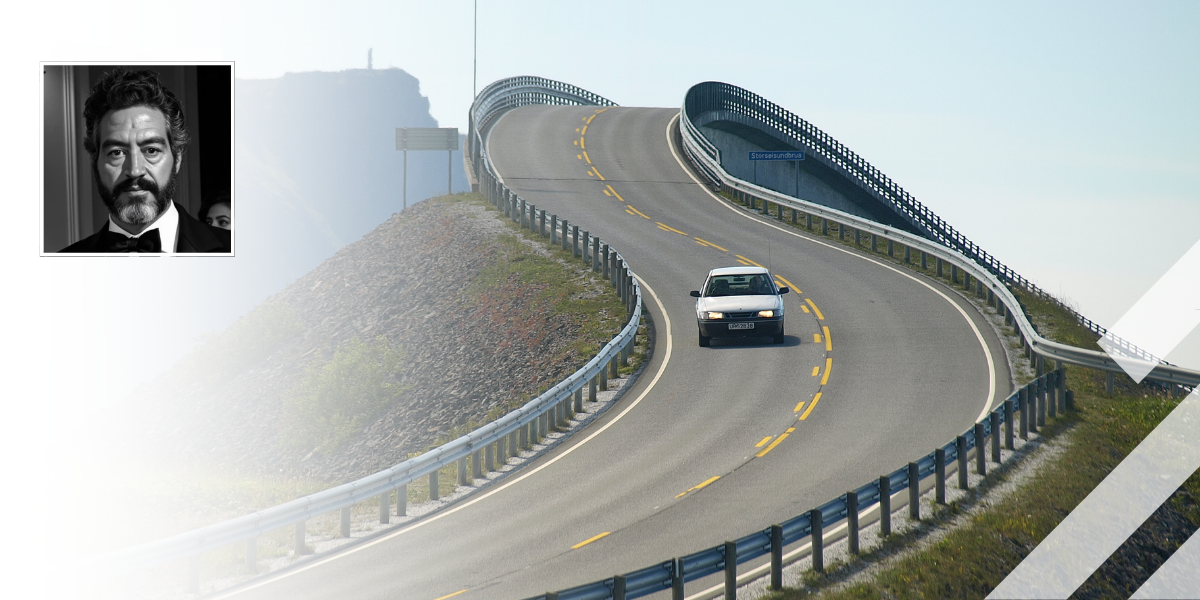Loading component...
ROAD TRAFFIC ACCIDENT KSI: THE PICTURE IN SPAIN
In the second of our two-part feature looking at the reasons behind the plateauing of the numbers of people killed and seriously injured (KSI) on Europe’s roads, after two decades of steadily decreasing, Intertraffic spoke with Elena de la Peña of the Spanish Roads Association (AEC) in an attempt to uncover some of the reasons behind this potentially worrying trend
Elena de la Peña is Deputy Director for Technical Affairs at the Spanish Roads Association (Asociación Española de Carreteras). The organisation has recognised that when it comes to road user safety, resting on their laurels is not an option. As cars become ever more safe it’s imperative that the roads they drive upon are at least equally as safe. A raft of new policies and measures, as described by de la Peña below, suggest that Spain’s proactive approach is geared up to reverse the albeit slight upward trend of European KSI statistics.
***
Intertraffic: One of the newer safety measures that Spain has implemented is a 30 km/h limit in some urban areas. How is that going from both political and technical points of view? Is it working and can you mention some other measures that the AEC is considering to help buck this worrying upward trend?
Elena de la Peña (EP): Well, as a general observation, I would say that in Spain we are having similar problems like in other countries. We were reducing the number of people killed on our roads every year from around 2003, when 5399 people were killed on Spanish roads, and 2013 when the number had fallen to 1680, from 2-10% per year. However, over the 10 years we are seeing the same number of people killed. As to why this is the case, I would say that if you do the same things it’s reasonable to expect that the same things are going to happen. So I think we need a change - we need a change in the policy. Repeating what we have been doing previously is just not working anymore.
According to the last data published [provisional data, only referred to rural roads, and considering victims after 24 hours from the accident] , during 2023 there were 1048 road accidents, where 1145 people were killed, while 4495 were injured and required medical assistance in hospital. We are firmly convinced that it is not only a matter of education, enforcement, vehicles, and so on, but also the road infrastructure sector has a main role to play, too.
If you continue to do the same things it’s reasonable to expect that the same things are going to happen. So I think we need a change of policy. Repeating what we have been doing previously is just not working anymore
Intertraffic: In terms of prioritising, what measure are you looking at implementing first?
EP: As you mentioned earlier we have reduced speeds in the urban areas to 30 km/h and although this is working well, it has only been implemented for 18 months. We are trying to promote the construction of 2+1 road sections [a category of three-lane highway consisting of two lanes in one direction and one lane in the other that alternates every few kilometres]. Motorways are statistically safer, of course, but where it isn’t possible or practical to build them we can have a 2+1 as an alternative. Another big issue is that around 40% of all road accidents in Spain are a result of cars leaving the road because of driver distraction or other problems, so I think we need specific programmes for the implementation of ‘forgiving roadsides’ that are designed so that drivers leaving the carriageway have a better chance of recovering control of the vehicle. The concept being that drivers should be ‘forgiven’ for making a mistake.
Intertraffic: One group of people that have been disproportionate victims of this albeit slight increase in deaths are vulnerable road users, such as cyclists and pedestrians. What are the Spanish Road Association doing to combat this?
EP: We have an enormous amount of vulnerable road users killed every year. In 2022 more than 50% of the 1746 people killed on Spanish highways were vulnerable road users; 20% were motorcyclists, particularly mopeds in rural areas. Our government announced some changes in regulation for driver licences for motorcyclists for this year, not only related to human factors and people’s ability to ride motorcycles, but also related to infrastructure and the interaction with other motorised vehicles. From the infrastructure point of view, we can do a lot of things like better maintenance, road safety audits, inspection and better equipment.
In 2022 more than 50% of the 1746 people killed on Spanish highways were vulnerable road users; 20% were motorcyclists, particularly mopeds in rural areas
Around 20% of those 1746 were pedestrians. That's a lot of people and it's not those killed in urban areas, it’s rural too. If there are people walking in the road we need specific places or protected places to enable them to travel safely. The digitalization of our road network and other measures related to technology will help to provide those tools. Not all roads are designed and managed to allow different modes to coexist in a safe manner for everybody. We need to identify which road sections are available for sharing spaces with vulnerable road users. This is a complicated political debate that is now being conducted here in Spain.
Intertraffic: We recently spoke with the City of Amsterdam about their new 30km/h scheme and the awareness campaigns they created. What does the Spanish Road Association do to encourage drivers to be more considerate to other road users?
EP: In the run-up to the Christmas holidays and the summer holidays we try to provide advice, such as to respect the rules of the road and other drivers. It’s not really our main focus but as an Association we promote good behaviour. Our mission is more linked to providing messages and evidence to the road administrations that they should provide a network that is safe for all the users. In addition, the Spanish Road Association launched a press release on road safety priorities in mid-2023, linked to the municipal and national elections, in order to raise awareness on road safety importance in policy.
Intertraffic: How would you summarise your vision of Spanish road safety?
EP: From the Spanish Road Association perspective the driver and the users are responsible for safety, but they are not solely responsible for the road safety figures. So we need to cooperate together from a safe system approach. We are trying to be more active and proactive with the promotion of actions that should be developed to provide a network that is safe for everybody. Of course, we are also very interested in providing a message of enforcement and education and training, but again this is not really our main focus of activity.
We are trying to be more active and proactive with the promotion of actions that should be developed to provide a network that is safe for everybody
Intertraffic: Finally, there seems to be a Europe-wide increase on incidents of alcohol-related offences. The experts believe that this is partly due to there not being sufficient numbers of enforcement officials. Is that the case in Spain, too?
EP: Very probably. We are not seeing the required increase in the number of people police officers for enforcement. In fact, the numbers suggest a slight reduction in the number of people dedicated to enforcing traffic safety regulations.
Spain has a good enforcement policy but I think we need to be more aggressive towards drink-driving and speeding. We have had some very serious “ghost driving” accidents where people drive in the wrong direction, typically but not exclusively by mistake. We had one in January that tragically saw three young people killed in Madrid.
Often when I drive to some rural corners of Spain I'm astonished that I don't see any evidence of traffic police. You need that feeling that there is somebody in a position of authority controlling the situation – that a drunk driver would be stopped, for example. In urban areas it’s different because there are more police officers that are dedicated to safety and security, but on our rural roads I think it's necessary to go further and increase that presence as a deterrent.
Elena de la Peña is Deputy Director for Technical Affairs at the Spanish Roads Association (Asociación Española de la Carreteras) and Vice-President and Chair of Technical Committee 1 (Smart Mobility) of the Smart Transportation Alliance (STA)



